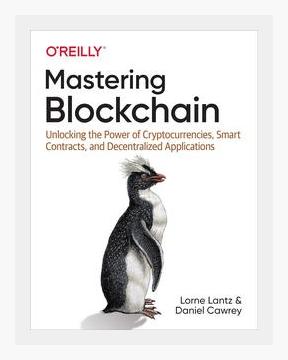Technology and Digital TransformationBlockchain Technology
Mastering Blockchain: Unlocking the Power of Cryptocurrencies, Smart Contracts, and Decentralized Applications by Imran Bashir (2017) offers a comprehensive guide to understanding the fundamental technologies that underlie blockchain, cryptocurrencies, smart contracts, and decentralized applications (dApps). This summary will cover the key points of the book, providing concrete examples and actionable steps for each major concept.
Introduction to Blockchain Technology
Overview and Definition:
Blockchain technology is defined as a decentralized ledger of all transactions across a network. This ensures that the record remains unalterable and transparent to all participants.
Example:
The first blockchain was created as the underpinning technology for Bitcoin, introduced by an individual or group using the pseudonym Satoshi Nakamoto in 2008.
Actionable Step:
Start by reading Satoshi Nakamoto’s whitepaper “Bitcoin: A Peer-to-Peer Electronic Cash System” to understand the initial conception and purpose of blockchain technology.
Cryptocurrencies
Fundamentals of Cryptocurrencies:
Cryptocurrencies utilize blockchain technology to create a secure and anonymous method of transaction. Bitcoin is the most well-known example and is considered digital gold.
Example:
Other popular cryptocurrencies include Ethereum, which supports smart contracts, and Ripple, aimed at facilitating real-time cross-border payments.
Actionable Step:
Create a digital wallet using a platform such as Coinbase or Binance, and buy a small amount of a popular cryptocurrency to understand the mechanics of transactions and wallets.
Smart Contracts
Definition and Use:
Smart contracts are self-executing contracts where the terms are directly written into code. These contracts automatically enforce the terms of an agreement when predefined conditions are met.
Example:
Ethereum’s platform facilitates the creation of these contracts, which can execute tasks like transferring ownership of property once payment has been verified.
Actionable Step:
Use Ethereum’s platform to create a simple smart contract using Solidity, a programming language designed for writing smart contracts. Platforms like Remix IDE can be utilized as an environment for coding.
Decentralized Applications (dApps)
Understanding dApps:
Decentralized applications operate on a blockchain network, as opposed to a singular central server. They can significantly increase transparency and reduce the risk of censorship or downtime.
Example:
A well-known dApp is CryptoKitties, a game that allows players to purchase, breed, and sell virtual cats. This is an application built on the Ethereum blockchain.
Actionable Step:
Explore and use dApps such as MetaMask and CryptoKitties to experience firsthand the functionality and benefits of decentralized applications.
Consensus Mechanisms
Types and Importance:
Consensus mechanisms are protocols that ensure all nodes in a blockchain network agree on the state of the blockchain. The two primary types are Proof of Work (PoW) and Proof of Stake (PoS).
Example:
Bitcoin uses PoW, which requires miners to solve complex mathematical problems to validate transactions and create new blocks. In contrast, Ethereum is moving towards PoS, where validation power is based on the number of coins staked.
Actionable Step:
Experiment with mining on a PoW network such as Bitcoin, or engage in staking coins on a PoS network like Ethereum or Tezos to understand the practical aspects of these mechanisms.
Scaling Blockchain Networks
Challenges and Solutions:
Scaling remains a significant challenge for blockchains due to the need for every transaction to be verified by a majority of network nodes. Solutions include increasing block size, sharding, and the use of off-chain transactions.
Example:
The Lightning Network is an example of an off-chain solution aimed at resolving Bitcoin’s scalability issues by enabling instant transactions between nodes.
Actionable Step:
Study the principles of off-chain transactions and test the Lightning Network on Bitcoin by conducting micro-transactions to evaluate its efficiency and speed.
Security in Blockchain
Security Considerations:
Security is paramount in blockchain technology due to its decentralized nature. Critical considerations include cryptographic algorithms, hashed pointers, and digital signatures.
Example:
The SHA-256 algorithm secures Bitcoin’s network by hashing the transaction data, making it theoretically immune to current computational attacks.
Actionable Step:
Familiarize yourself with different cryptographic algorithms like SHA-256 and try hashing data using tools like OpenSSL to comprehend how these mechanisms secure blockchain networks.
Legal and Ethical Considerations
Regulatory Landscape:
The legal framework surrounding blockchain and cryptocurrencies is still evolving. Key concerns include regulatory compliance, anti-money laundering (AML), and know-your-customer (KYC) regulations.
Example:
In 2017, the SEC declared that some tokens could be classified as securities, bringing them under stricter regulatory control.
Actionable Step:
Stay current with legal updates by following regulatory bodies like the SEC and the Financial Action Task Force (FATF). Implement KYC procedures if developing a blockchain-based application to ensure compliance.
Blockchain in Various Sectors
Applications Across Industries:
Blockchain’s potential extends beyond cryptocurrency to sectors including finance, healthcare, supply chain, and government.
Example:
Walmart uses blockchain to improve traceability in its supply chain, enhancing food safety by tracking the origin and journey of products from farm to table.
Actionable Step:
Research a blockchain application in your field of interest. For example, if working in healthcare, investigate how blockchain can manage patient records and enhance data security.
Future Trends
Emerging Technologies and Convergence:
The future of blockchain is closely linked with emerging technologies like artificial intelligence (AI), the Internet of Things (IoT), and Big Data. The convergence of these technologies can enable more sophisticated and integrated solutions.
Example:
IoT devices using blockchain can secure data exchanges and automate processes in smart cities, creating seamless and transparent systems.
Actionable Step:
Participate in hackathons or forums focused on blockchain integration with other technologies to innovate and create new use cases that leverage the combined strengths of these emerging trends.
Conclusion:
“Mastering Blockchain” by Imran Bashir provides an extensive exploration of the blockchain universe, from fundamental principles to advanced applications. By understanding these key points and taking practical steps, readers can effectively harness the power of blockchain in various domains.
This summary encapsulates the overarching themes of Imran Bashir’s book and provides clear, actionable steps for readers to deepen their understanding and practical experience with blockchain technologies.
